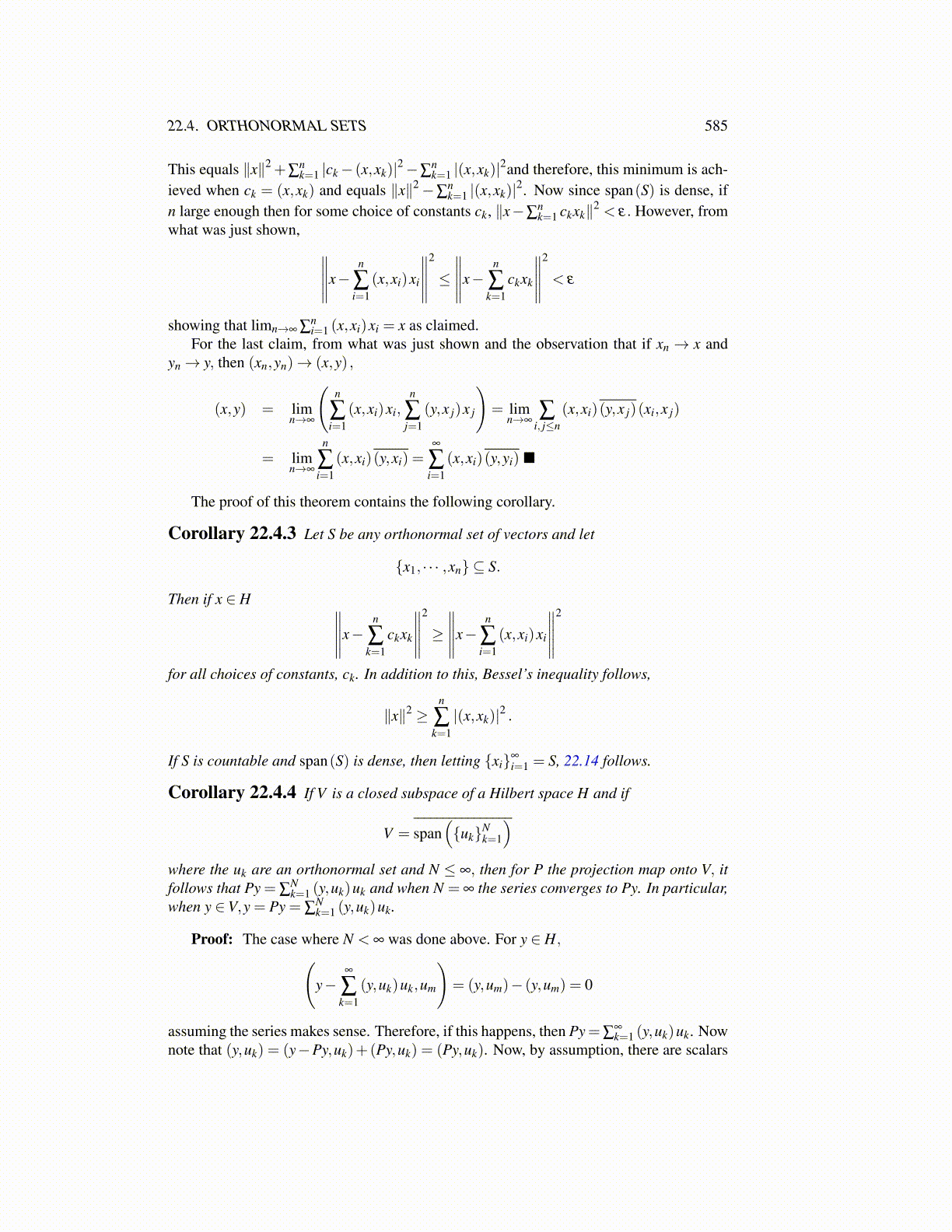
22.4. ORTHONORMAL SETS 585
This equals ∥x∥2 +∑nk=1 |ck− (x,xk)|2−∑
nk=1 |(x,xk)|2and therefore, this minimum is ach-
ieved when ck = (x,xk) and equals ∥x∥2−∑nk=1 |(x,xk)|2. Now since span(S) is dense, if
n large enough then for some choice of constants ck, ∥x−∑nk=1 ckxk∥2 < ε. However, from
what was just shown, ∥∥∥∥∥x−n
∑i=1
(x,xi)xi
∥∥∥∥∥2
≤
∥∥∥∥∥x−n
∑k=1
ckxk
∥∥∥∥∥2
< ε
showing that limn→∞ ∑ni=1 (x,xi)xi = x as claimed.
For the last claim, from what was just shown and the observation that if xn → x andyn→ y, then (xn,yn)→ (x,y) ,
(x,y) = limn→∞
(n
∑i=1
(x,xi)xi,n
∑j=1
(y,x j)x j
)= lim
n→∞∑
i, j≤n(x,xi)(y,x j)(xi,x j)
= limn→∞
n
∑i=1
(x,xi)(y,xi) =∞
∑i=1
(x,xi)(y,yi) ■
The proof of this theorem contains the following corollary.
Corollary 22.4.3 Let S be any orthonormal set of vectors and let
{x1, · · · ,xn} ⊆ S.
Then if x ∈ H ∥∥∥∥∥x−n
∑k=1
ckxk
∥∥∥∥∥2
≥
∥∥∥∥∥x−n
∑i=1
(x,xi)xi
∥∥∥∥∥2
for all choices of constants, ck. In addition to this, Bessel’s inequality follows,
∥x∥2 ≥n
∑k=1|(x,xk)|2 .
If S is countable and span(S) is dense, then letting {xi}∞
i=1 = S, 22.14 follows.
Corollary 22.4.4 If V is a closed subspace of a Hilbert space H and if
V = span({uk}N
k=1
)where the uk are an orthonormal set and N ≤ ∞, then for P the projection map onto V, itfollows that Py = ∑
Nk=1 (y,uk)uk and when N = ∞ the series converges to Py. In particular,
when y ∈V,y = Py = ∑Nk=1 (y,uk)uk.
Proof: The case where N < ∞ was done above. For y ∈ H,(y−
∞
∑k=1
(y,uk)uk,um
)= (y,um)− (y,um) = 0
assuming the series makes sense. Therefore, if this happens, then Py=∑∞k=1 (y,uk)uk. Now
note that (y,uk) = (y−Py,uk)+(Py,uk) = (Py,uk). Now, by assumption, there are scalars